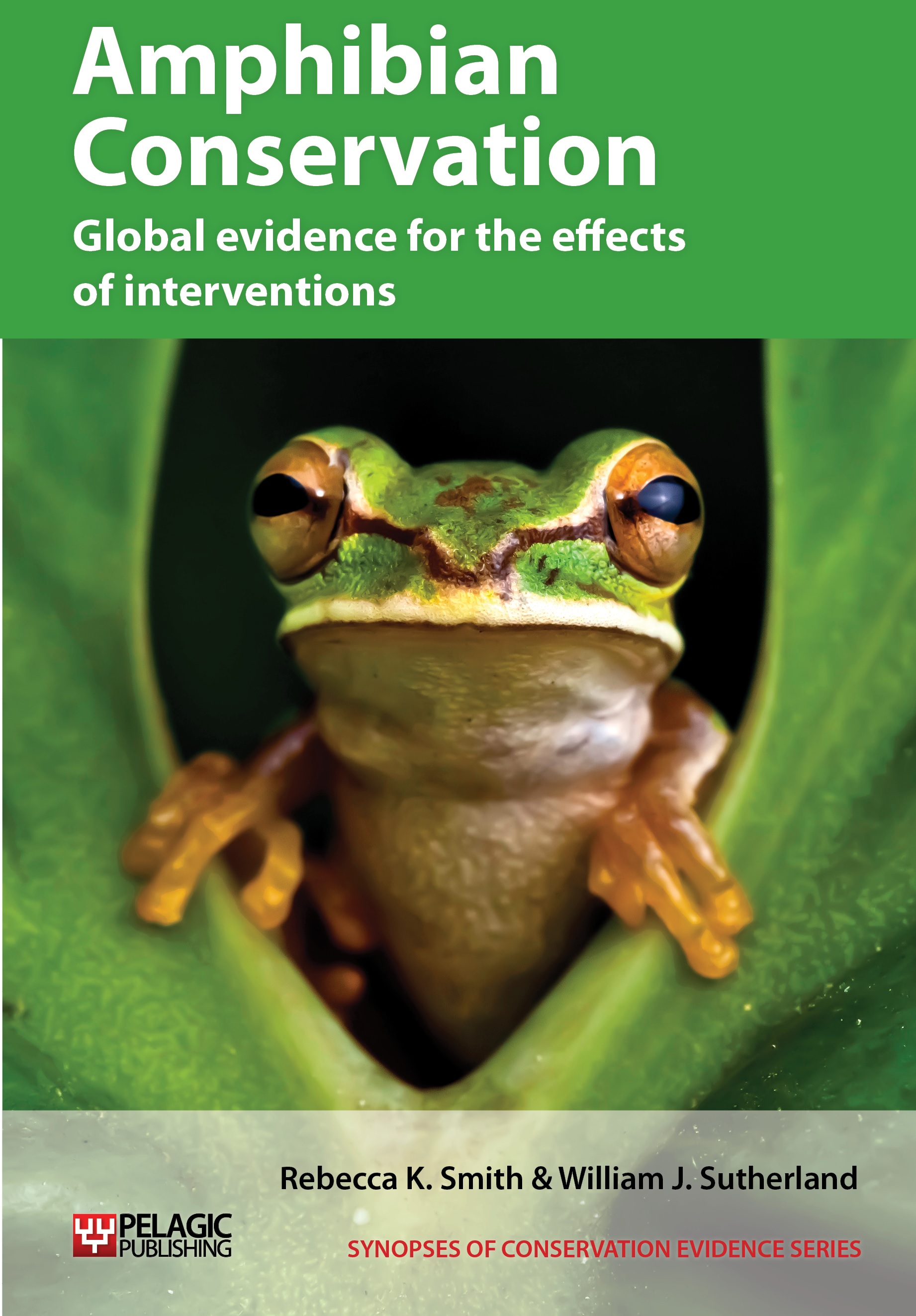Use shelterwood harvesting instead of clearcutting
-
Overall effectiveness category Likely to be beneficial
-
Number of studies: 5
View assessment score
Hide assessment score
How is the evidence assessed?
-
Effectiveness
40% -
Certainty
57% -
Harms
10%
Study locations
Supporting evidence from individual studies
A randomized, replicated, controlled, before-and-after study in 1993–1995 of forest in Virginia, USA (Sattler & Reichenbach 1998) found that shelterwood harvest resulted in higher abundances of otter salamanders Plethodonh ubrichti compared to clearcutting. Relative abundance did not differ significantly before and after harvest in the shelterwood (4 vs 4–5) and unharvested sites (7 vs 8). However, numbers declined within clearcuts (5 vs 1). Similarly, population estimates varied over time within the shelterwood (12–50) and unharvested sites (40–103), but declined steadily within clearcuts (from 43 to 8). The proportion of juveniles increased in the unharvested plot (8 to 30%), whereas the proportion remained lower in the shelterwood (4 to 13%) and clearcut sites (3 to 12%). Growth and movement rates were similar between treatments. Treatments were randomly assigned over 12 sites (0.6–1.2 ha): shelterwood harvest (33–64% removed), clearcut and unharvested. Harvest was in May 1994. Salamanders were surveyed up to eight times a year within one 5 x 5 m plot/site. Mark-recapture was undertaken at one site.
Study and other actions testedA controlled, before-and-after study in 1994–1997 in a hardwood forest in Virginia, USA (Harpole & Haas 1999) found that shelterwood harvesting resulted in a decrease in the relative abundance of salamanders, similar to clearcutting. Captures decreased significantly after shelterwood harvests with 12–15 m2 basal area retained/ha (before: 9; one year after: 6; three years: 2/search) or 4–7 m2 basal area retained/ha (before: 12; one year after: 4; three years: 1/search) and on clearcut plots (before: 10; one year after: 7; three years: 1/search). Abundance did not differ significantly within the unharvested plot (before: 10; one year after: 10; three years: 8). Treatments on 2 ha plots were: two shelterwood harvests, clearcutting (up to 12 wildlife and dead trees retained) and unharvested. Salamanders were monitored along 15 x 2 m transects with artificial cover objects (50/plot).
Study and other actions testedA randomized, replicated, controlled, before-and-after study in 1993–1999 of five harvested hardwood forests in Virginia, USA (Knapp et al. 2003) found that shelterwood harvesting resulted in significantly higher salamander abundances than clearcutting (3 vs 1/30 m2; see also Homyack & Haas 2009). However, abundance was significantly lower than unharvested plots (6/30 m2). Species composition differed before and three years after harvest. There was no significant difference in the proportion of females carrying eggs or eggs/female for red-backed salamander Plethodon cinereus (7 eggs) or mountain dusky salamander Desmognathus ochrophaeus (12–13 eggs) in unharvested and harvested treatments (shelterwoods, leave-tree and clearcut with wildlife trees or snags left). The proportion of juveniles was similar except for slimy salamander Plethodon glutinosus, which had a significantly lower proportion in harvested plots. There were five sites with 2 ha plots with the following treatments: shelterwoods (41–81% removed), clearcutting, other harvested treatments and an unharvested control. Salamanders were monitored on 9–15 transects (2 x 15 m)/plot at night in April–October. One or two years of pre-harvest and 1–4 years of post-harvest data were collected.
Study and other actions testedIn a continuation of a previous study (Knapp et al. 2003), a randomized, replicated, controlled study in 1994–2007 of six hardwood forests in Virginia, USA (Homyack & Haas 2009) found that shelterwood harvesting did not increase salamander abundance compared to clearcutting up to 13 years after harvest. Abundance was similar between treatments (4 vs 2/transect respectively) and significantly lower than unharvested plots (7/transect). Proportions of juveniles and eggs/female were significantly lower in harvested (leave-tree and group harvesting and clearcut with wildlife trees or snags left) compared to unharvested treatments for mountain dusky salamander Desmognathus ochrophaeus and juveniles for red-backed salamander Plethodon cinereus. Proportions of females carrying eggs for slimy salamander Plethodon glutinosus and southern ravine salamanders Plethodon richmondii were similar in harvested and unharvested plots. There were six sites with 2 ha plots randomly assigned to treatments: shelterwood harvest (41% reduction), clearcutting, other harvested treatments and an unharvested control. Treatments were in 1994–1998 and salamanders were monitored at night along nine 15 x 2 m transects/site.
Study and other actions testedA meta-analysis of the effects of different harvest practices on terrestrial salamanders in North America (Tilghman, Ramee & Marsh 2012) found that partial harvest, that included shelterwood harvesting, thinning and cutting individual or groups of trees resulted in smaller reductions in salamander populations than clearcutting. Overall, partial harvest produced declines 24% smaller than clearcutting. Average reductions in populations were lower following partial harvest (all studies: 31–48%; < 5 years monitoring: 51%; > 10 years monitoring: 29%) compared to clearcutting (all: 54–58%; < 5 years: 62%; > 10 years: 50%). There was no significant effect of the proportion of canopy removed in partial harvests. Sampling methodology influenced perceived effects of harvest. Salamander numbers almost always declined following timber removal, but populations were never lost and tended to increase as forests regenerated. Twenty-four site comparison and before-and-after studies that compared salamander abundance in harvested (partial or clearcut) and unharvested areas were analysed. Abundance measures included counts, population indices and density estimates.
Study and other actions tested
Where has this evidence come from?
List of journals searched by synopsis
All the journals searched for all synopses
This Action forms part of the Action Synopsis:
Amphibian Conservation
Amphibian Conservation - Published 2014
Amphibian Synopsis





)_2023.JPG)














